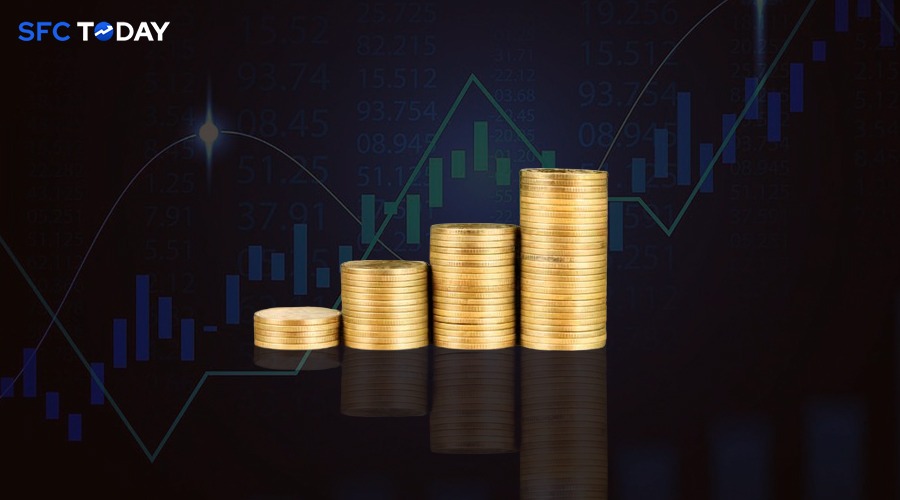Gold ETFs are investment instruments that track the price of domestic physical gold
Gold Exchange Traded Funds (ETFs) have been a significant investment avenue for those looking to diversify their portfolios and hedge against economic uncertainties. April 2024 witnessed a notable shift in this landscape with a net withdrawal of Rs 396 crore from Gold ETFs, marking the first major outflow since March 2023. This article delves into the reasons behind this outflow, the performance of Gold ETFs, and the broader implications for investors.
Understanding Gold ETFs
Gold ETFs are investment instruments that track the price of domestic physical gold. These funds invest the pooled money into gold bullion, offering investors a way to own gold without the complications of buying and storing physical gold. According to the Association of Mutual Funds in India (AMFI), each Gold ETF unit typically represents one gram of gold, backed by high-purity physical gold.
Key Features of Gold ETFs
Liquidity: Gold ETFs are traded on stock exchanges, providing liquidity and the ability to buy or sell at market prices during trading hours.
Purity: Investments are backed by physical gold of high purity, typically 99.5% or higher.
Cost Efficiency: They eliminate the need for storage and insurance costs associated with physical gold.
Transparency: Prices of Gold ETFs are aligned with the market rates of gold, offering transparent pricing.
April 2024 Outflows: Analyzing the Numbers
April 2024 saw a significant net withdrawal of Rs 396 crore from Gold ETFs. This outflow came on the heels of a Rs 266 crore outflow in March 2023, indicating a trend where investors might be booking profits. Despite these withdrawals, the assets under management (AUM) for Gold ETFs surged by 5%, from Rs 31,224 crore in March to Rs 32,789 crore at the end of April.
Factors Contributing to the Outflow
Profit Booking: Investors often book profits when the prices of their investments rise significantly. Given the substantial appreciation in gold prices, many chose to capitalize on their gains.
Comparative Performance: While gold performed well in Indian rupee terms, it underperformed compared to equities. This disparity might have prompted investors to reallocate their funds to more lucrative equity investments.
Market Sentiment: The inflow of Rs 373 crore in the preceding month (March 2024) followed by the significant outflow in April suggests a change in market sentiment, possibly driven by external economic factors or shifts in investor priorities.
Gold’s Performance and Investor Behavior
Gold has long been viewed as a safe haven, particularly during times of inflation and geopolitical instability. In 2023, Gold ETFs saw an inflow of Rs 2,920 crore, a substantial increase from the Rs 459 crore inflow in 2022. This surge highlights gold’s appeal during uncertain times.
Price Trends and Market Dynamics
Price Appreciation: Gold prices reached new highs in both US dollar and Indian rupee terms. This appreciation attracted investors initially but also led to profit booking as prices peaked.
Economic Factors: Inflation, currency fluctuations, and geopolitical tensions often drive gold prices. The recent price movements likely reflect these underlying economic conditions.
Investor Participation: The number of folios (investment accounts) in Gold ETFs rose by over 1 lakh, reaching 51.84 lakh in April from 50.61 lakh in March 2024. This increase indicates growing investor interest, even amidst profit booking.
The Broader Implications
Investment Diversification
Gold ETFs play a crucial role in portfolio diversification. Their performance, relative to equities and other asset classes, provides a hedge against market volatility. The recent outflows, while notable, do not necessarily indicate a loss of confidence in gold but rather a strategic reallocation by investors.
Market Sentiment and Future Trends
The net outflows in April could be a temporary phase, influenced by short-term profit booking. Given the historical performance of gold and its role as a safe haven, it is likely that Gold ETFs will continue to attract investor interest, especially if economic uncertainties persist.
Comparative Asset Class Performance
Gold’s underperformance relative to equities highlights the importance of asset allocation. Investors need to balance their portfolios, considering both short-term gains and long-term security. The current trends suggest that while equities may offer higher returns, gold provides stability.
Policy and Economic Outlook
Future movements in Gold ETFs will also be influenced by broader economic policies, including interest rates, fiscal measures, and global economic conditions. Investors should stay informed about these factors to make strategic investment decisions.
The net withdrawal of Rs 396 crore from Gold ETFs in April 2024 underscores the dynamic nature of investment strategies. While profit booking played a significant role in this outflow, the overall rise in AUM and the increasing number of investor folios highlight the enduring appeal of gold as an investment.
Key Takeaways for Investors
Diversification: Continue to diversify portfolios to balance risk and reward across different asset classes.
Market Monitoring: Keep a close eye on market trends and economic indicators to make informed decisions.
Long-term Perspective: While short-term gains are attractive, maintaining a long-term perspective on gold investments can provide stability.
As global economic conditions evolve, the performance of Gold ETFs will likely reflect broader market sentiments. Investors should remain vigilant, balancing their portfolios to navigate both opportunities and risks in the financial landscape
In summary, while April 2024 marked a notable shift with significant outflows from Gold ETFs, the overall trajectory for gold as a strategic investment remains robust. The combination of profit


